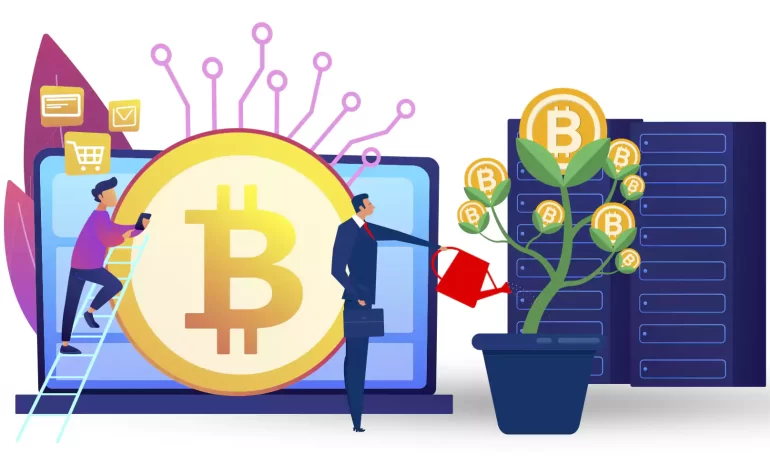






KVM stands for Kernel-based Virtual Machine, an open-source Linux virtualization technology that allows the Linux kernel to be used as a hypervisor. Introduced in 2006 and was then integrated into the original version of the Linux kernel. Also, it is part of the Linux code and uses every Linux feature, maintenance, and development without engineering. In this article, we are going to teach you What is KVM?
Virtualization refers to a simulated computing resource that mimics the corresponding real resource and makes many resources, from software to specialized hardware devices, to complete hardware platforms. It also covers virtual machines, which include devices such as CPU, memory, network card, disk, graphics adapter, and operating system. The software in question that creates and runs virtual machines is called a hypervisor.
Years ago, in data centers, development, and practice organizations, all machines ran a version of the same operating system, such as Windows, FreeBSD, and Linux. But today, different operating systems such as Linux and Windows and even different versions of an operating system are placed in a computer environment without virtual machines; several physical machines are deployed and maintained to run programs on multiple operating platforms. Virtualization also allows multiple virtual machines, each potentially running a different operating system, to run on a single physical machine.
In the rest of this article, we are going to introduce the KVM to you.
KVM is classified as a type 2 hypervisor, which means it runs on a host operating system. It is also based on the kernel, more precisely, the Linux kernel. It only supports Linux as its host operating system. If you need a type 2 open-source multi-platform hypervisor, VirtualBox is the right choice. VirtualBox also runs natively on Windows, Linux, Mac OS X, and Solaris.
We recommend that you visit the cheap dedicated server that is offered on our website, and after choosing the plan you want, install KVM on it.

It competes in an industry with open-source alternatives such as Xen VirtualBox and proprietary products such as VMware vSphere, Citrix XenServer, and Microsoft Hyper-V. In the past, hypervisor solutions at the time, such as Xen and VirtualBox, were all software-based, and the x86 architecture could not support virtualization. It wasn’t until 2005 that the introduction of the Intel VT and AMD-V extension instruction sets permanently changed the virtualization landscape.
You can currently install KVM on any 32-bit or 64-bit x86 computer, the “host machine” in Hypervisory parlance, that supports the Intel VT or AMD-V plug-in. Today, modern hypervisors typically support hybrid virtualization, which is hardware-assisted and software-assisted for older chipsets.
KVM supports the virtualization of the following guest operating systems:
1- Linux distributions including Debian, Ubuntu, Centos, Fedora, RedHat Enterprise Linux
2- BSD like OpenBSD, FreeBSD, and NetBSD
3- Solaris
4- Windows
It currently runs unmodified guest OS images. This feature is also known as full virtualization, in contrast to para-virtualization, where the guest operating system is modified to specifically handle operations that are much more difficult to execute on the virtual machine than on the host machine.
KVM has 2 technology components: kernel and user space. The kernel component consists of 2 loadable kernel modules: kvm.ko and kvm-intel.ko or kvm-amd.ko
kvm.ko module: provides kernel architecture-independent virtualization processing.
kvm-intel.ko and kvm-amd.ko modules: correspond to modules for Intel and AMD processors. Also, these modules were integrated into the Linux kernel version 2.6.20.
KVM uses QEMU, which runs in user space, to create virtual machines that interact with the guest operating system. Each virtual machine is simply a normal Linux process, and you can use Linux commands like top and kill to monitor and manage virtual machines.
Virtual Machine Manager appears in the Applications -> System Tools menu. First, create a new connection to the local QEMU instance from the File -> Add Connection menu. Localhost (QEMU) or QEMU/KVM should appear in the virtual machine list. You can now create a virtual machine by pressing the top left button and the new virtual machine toolbar button.
After more than several years of development and operation, KVM has become the standard machine-level virtualization tool in many Linux distributions. In this educational article, you learned What is KVM? We hope this educational article was useful for you. Share your comments with us through the form below.
How useful was this post?
Click on a star to rate it!
Average rating 5 / 5. Vote count: 1
No votes so far! Be the first to rate this post.
 Tags
Tags

As the world of business becomes increasingly digital, companies are constantly seeking innovative s...



 Tags
Tags

Joomla is an easy-to-use content management system. This software is based on the Internet. By imple...



 Tags
Tags
What is your opinion about this Blog?








